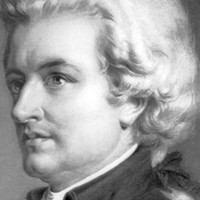Details

Joseph Haydn
Symphony No. 67

Wolfgang Amadeus Mozart
Clarinet Concerto
(Duration: 30 min)
The music that Wolfgang Amadeus Mozart wrote for his friend Anton Stadler, a clarinetist and fellow freemason, was instrumental in establishing the clarinet as an equal to its older cousins in the woodwind family. Mozart’s first composition for Stadler was the “Kegelstatt” Trio from 1786, scored for clarinet, viola and piano. (Mozart played the viola part himself.) Next came a quintet for clarinet, two violins, viola and cello, completed in 1789. This work required a basset clarinet in the key of A, an instrument with a low-range extension designed by Stadler. Mozart went on to write Stadler a concerto featuring the same instrument, completed two months before the composer’s untimely death.
The Clarinet Concerto in A Major demonstrates Mozart’s keen understanding of the solo instrument’s range and agility. The tonal quality of the clarinet changes through its range, from the deep resonance of the bass notes, through the warm and hollow midrange of the chalumeau register, and up into the brilliant clarity of the highest octaves. At certain points in the fast opening movement, the soloist seems to play several opera characters engaged in dialogue, leaping from range to range; other times, a single scale or arpeggio journeys across all four octaves of the instrument’s compass.
In 1785, a critic wrote of Anton Stadler, “One would never have thought that a clarinet could imitate the human voice to such perfection.” Judging by the slow movement penned expressly for Stadler, Mozart surely agreed!
The finale has a bit of Haydn’s sense of humor in it, as in the playful held notes of the main theme that draw out unresolved tension. The episodic structure of the Rondo allows for fanciful and dramatic excursions, making each return to the familiar music all the more delightful.
Aaron Grad ©2023
About This Program
SPCO Principal Clarinet Sang Yoon Kim performs one of the most beloved pieces in classical music, finished just weeks before Mozart’s death and often referred to as the composer’s swan song.

